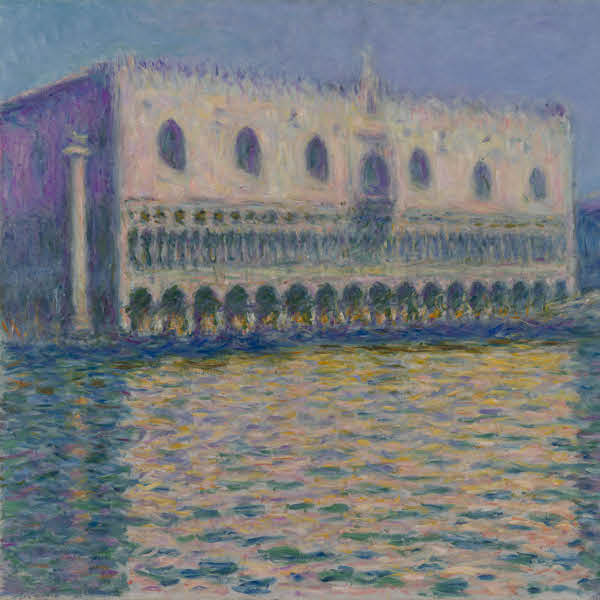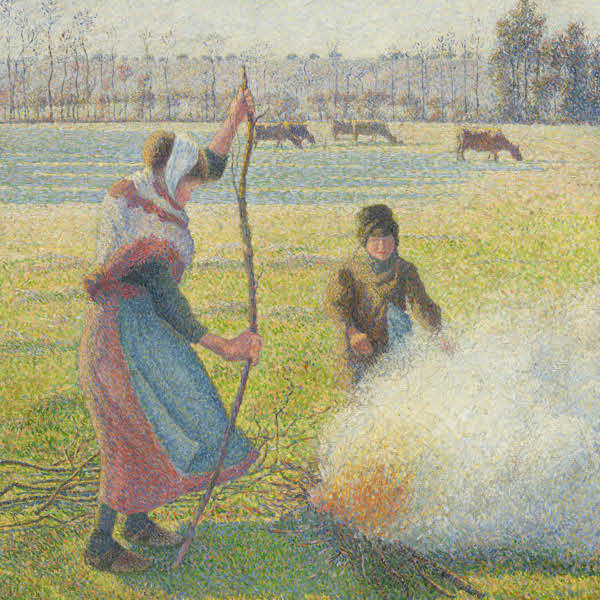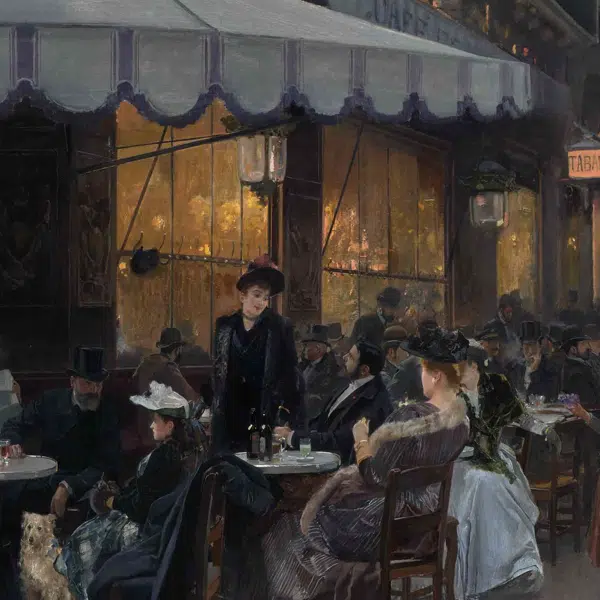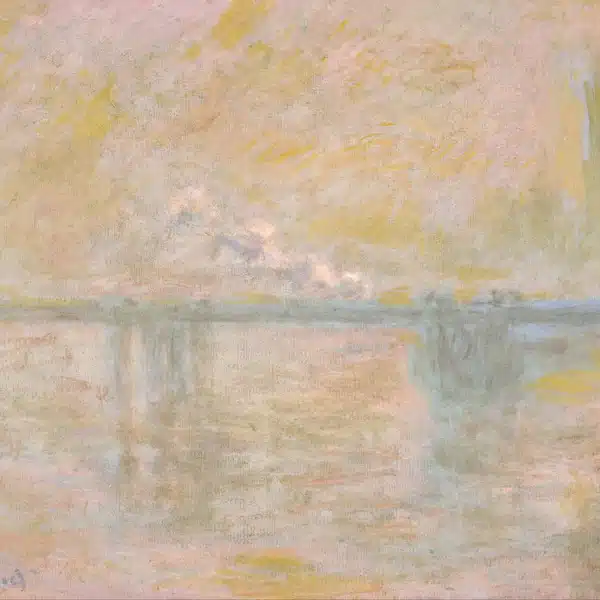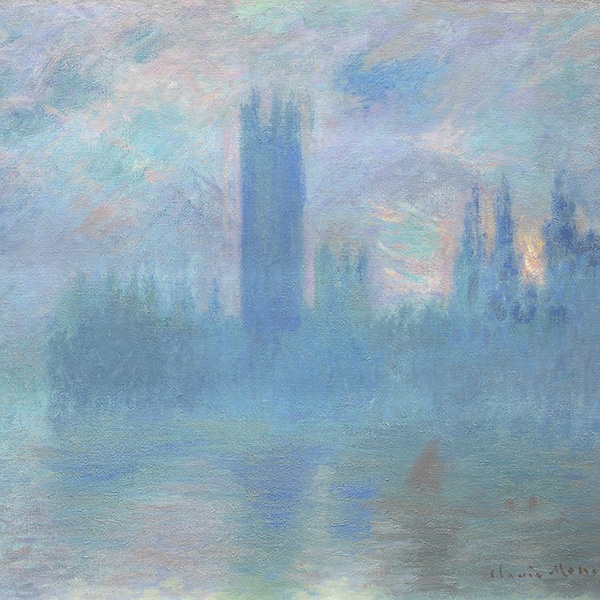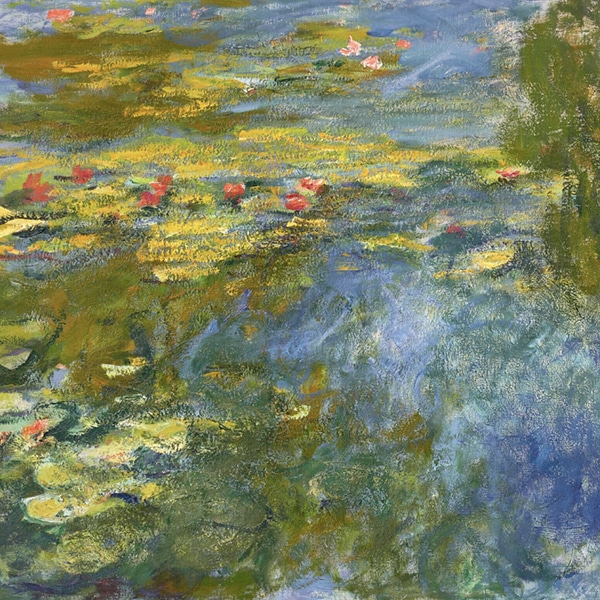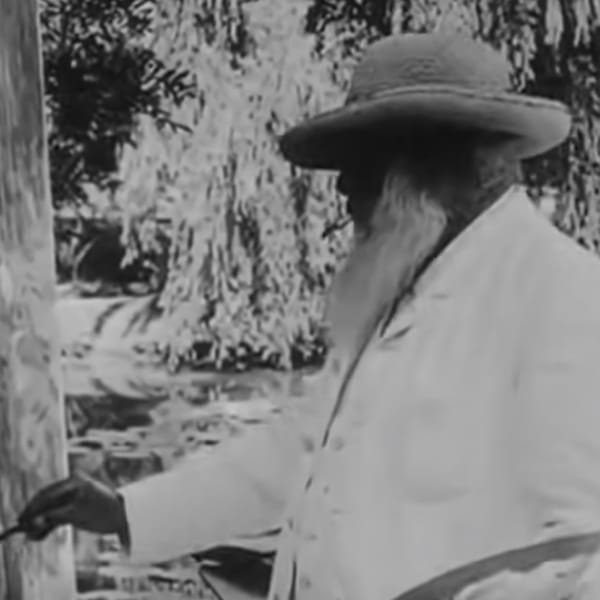
Left: Pierre-Auguste Renoir, c. 1910 (Photo: Dornac via Wikipedia Commons Public Domain | Right: Pierre-Auguste Renoir, “Bal du moulin de la Galette,” 1876 (Photo: Musée d'Orsay via Wikimedia Commons Public Domain)
French artist Pierre-Auguste Renoir was not only a leading figure in 19th-century art, but he also had a central role in the Impressionist movement. Together with Claude Monet, Edgar Degas, and Camille Pissarro, he would go on to forge a new path and reject the classical tradition of academic French painting. After exhibiting his work in the First Impressionist Exhibition of 1874, Renoir became a successful and sought after painter.
The son of a tailor, Renoir grew up close to the Louvre; its galleries would become his refuge. Eventually, he started taking art lessons under Charles Gleyre, where he would meet a group of budding artists who form a tight bond—Alfred Sisley, Frédéric Bazille, and Claude Monet. Though Renoir would have some of his work accepted by the prestigious Paris Salon, his road to success was slow until he decided to abandon the system and work with his friends to form the then-underground Impressionist movement.
Renoir's Impressionist paintings not only made him a leader in the movement but have earned him a reputation as one of the great painters of the 19th century. Known for his vibrant use of color and spectacular depiction of light, Renoir created artwork that documents life during Belle Époque Paris. Let's explore five of Renoir's most famous paintings to see how this French master contributed to the history of art.
If you love Impressionism, you won't want to miss these incredible Renoir paintings.
Bal du Moulin de la Galette
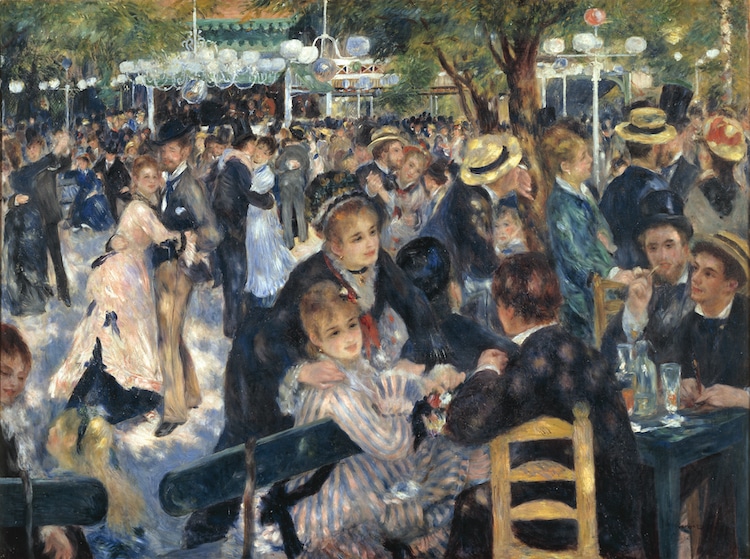
Pierre-Auguste Renoir, “Bal du moulin de la Galette,” 1876 (Photo: Musée d'Orsay via Wikimedia Commons Public Domain)
Bal du moulin de la Galette (“Dance at the Moulin de la Galette“) is perhaps Renoir's most beloved masterpiece. Painted while Impressionism was still in its early years, the large-scale outdoor scene is the perfect example of working en plein air. Renoir's look at French life and leisure is filled with actors, artists, critics, and Renoir's family members. The scene shows a typical afternoon at the Moulin de la Galette in the Paris' Montmartre district. His use of color and mastery in creating an effect of dappled light helped make this painting emblematic of the entire Impressionist movement.
Luncheon of the Boating Party
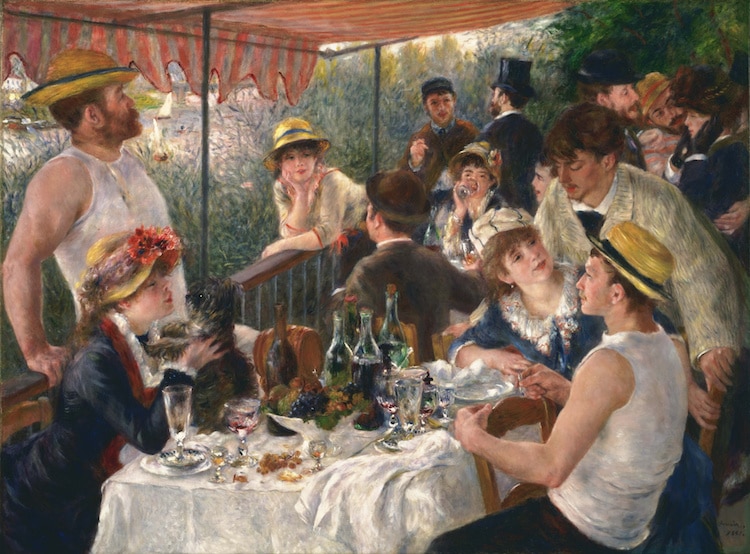
Pierre-Auguste Renoir “Luncheon of the Boating Party” (1880-1881) (Photo: The Phillips Collection via Google Arts & Culture Public Domain)
One of Renoir's largest paintings, Luncheon of the Boating Party was an immediate success after being shown at the Seventh Impressionist Exhibition. The painting combines all of the subjects that Renoir most loved to paint—still lifes, portraits, and outdoor scenes. As usual, Renoir gathered many of his close friends to sit for the painting, including artist Gustave Caillebotte who is seated wearing a white shirt and boater's hat. Again, this oil painting focuses on leisure activities, as the group is shown having lunch on the sunny balcony of the Maison Fournaise, a restaurant where one could rent boats not far from Paris.
Dance at Bougival
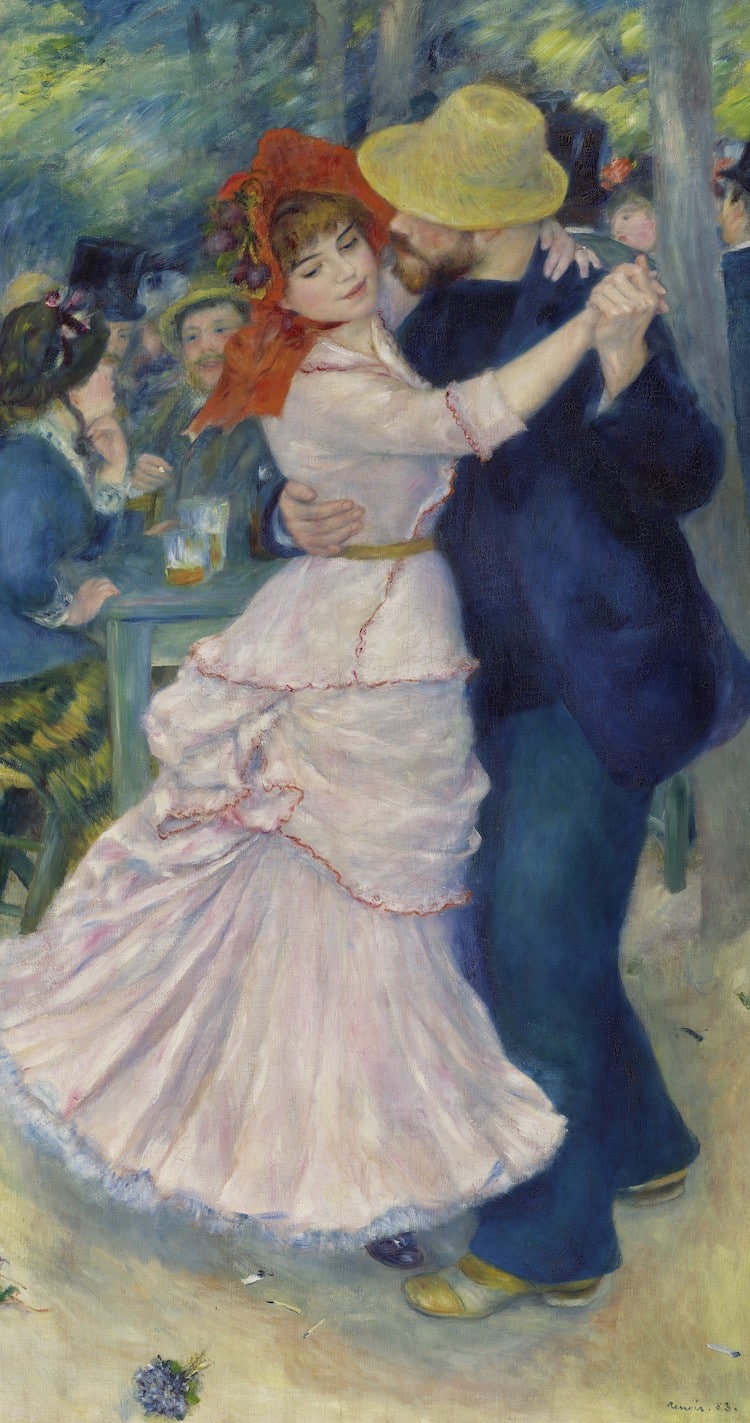
Pierre-Auguste Renoir “Dance at Bougival” (1883) (Photo: Museum of Fine Arts, Boston via Wikipedia Commons Public Domain)
The vibrant Dance at Bougival is one of three paintings Renoir executed that show a couple dancing in different environments. In this case, the couple is Suzanne Valadon and Paul Lhote, two of Renoir's friends. The artist captures their spirit as they dance at an open-air cafe in the suburban town of Bougival. Located a short distance from Paris on the River Seine, it was a popular recreation spot for urbanites and a favorite painting location for the Impressionists. Renoir includes touches like cigarettes, burnt matches, and flowers on the ground to build up the atmosphere of the cafè. He also captures the flushed cheeks of the couple, signaling their passion and excitement.
Two Sisters (On the Terrace)

Pierre-Auguste Renoir “Two Sisters (On the Terrace)” (1881) (Photo: Art Institute of Chicago via Wikipedia Commons Public Domain)
Painted on the terrace of the Maison Fournaise—the location of his Luncheon of the Boating Party—Renoir's Two Sisters (On the Terrace) shows two young women posing next to a basket of wool. These wool balls not only play a compositional role, but they're important to the color palette. Renoir would mix and dilute the pure pigment used for the wool throughout the entire painting. Interestingly, though the girls are meant to be sisters, they actually aren't related. Renoir labored over the painting until he was satisfied the all the elements, from the figures to the landscape, were in harmony. He gave the painting its first title, Two Sisters, with the second title being added by the painting's first owner, art dealer Paul Durand-Ruel.
The Large Bathers
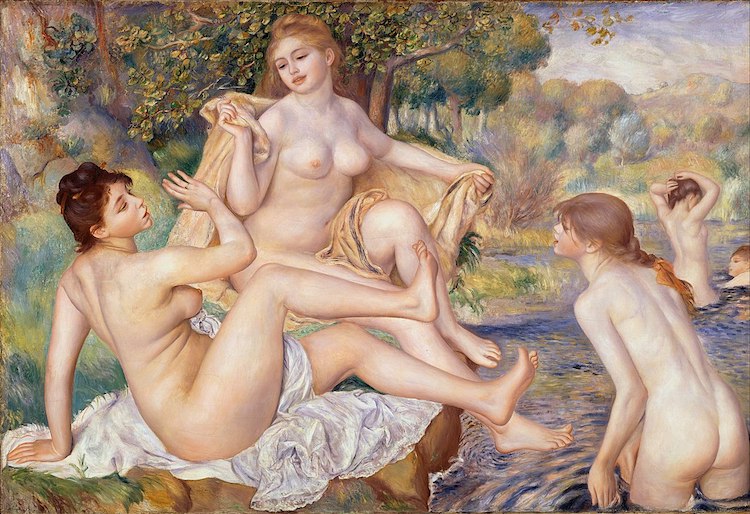
Pierre-Auguste Renoir “The Large Bathers” (1884-1887) (Photo: Philadelphia Art Museum via Google Art Project Public Domain)
After his initial period of success, Renoir spent several years traveling abroad to soak in the work of artists he admired. This included a period in Italy, where he took in paintings by Titian and Raphael. With The Large Bathers, Renoir attempted to marry what he saw in the Great Masters with the principals of Impressionism. In doing so, he followed in the long tradition of bathers in art and showed three women bathing in the foreground while two wash in the background. In some ways, the painting, which Renoir worked on for four years, is a rejection of Impressionism. The figures have a classic, sculptural quality, while the landscape retains more of the loose Impressionist brushstrokes. When revealed, the painting received harsh criticism due to the change in Renoir's style, but it's now appreciated for its attempt to balance history and modernity.
Related Articles:
The Story and Inspiration Behind Claude Monet’s Iconic ‘Water Lilies’ Series
How This 150-Year-Old Painting Freezes a Fleeting Parisian Moment in Time
How Berthe Morisot Broke Barriers to Become the First Female Impressionist
Why Post-Impressionist Painter Paul Cézanne Is Known as the “Father of Modern Art”











































































